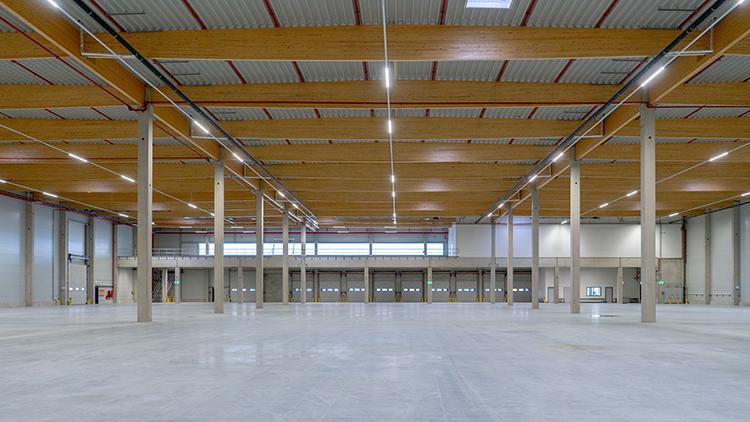Panattoni pioneers wooden structures in large-scale industrial halls in the Czech Republic
In a groundbreaking development for the Czech construction industry, Panattoni has become the first company in the country to secure approval for the use of wooden trusses and roof structures in large industrial halls for production and logistics. This milestone, approved by the Fire and Rescue Department of the Pilsen Region, paves the way for a sustainable approach to industrial architecture, blending innovation with environmental responsibility. The inaugural project incorporating this innovation is the Panattoni Park Pilsen West III, located in Úherce, 14 kilometers west of Plzeň. This modern industrial park, set to offer over 40,000 square meters of lettable space, is designed to showcase sustainable practices in large-scale industrial construction. Using wood as the primary material for roof structures offers numerous environmental benefits. As a renewable resource with a low carbon footprint, timber significantly reduces emissions during production and processing. Its use also enhances material efficiency and lowers energy consumption during construction.
Pavel Sovička, Managing Director of Panattoni for the Czech Republic and Slovakia, remarked: “This decision sets a precedent in the Czech Republic, where wooden roofs have traditionally been limited to residential, office, and smaller industrial properties. We are thrilled to lead the way in sustainable development while ensuring the fire safety measures match the standards of concrete structures.” The approval process involved extensive collaboration among Panattoni, engineering experts, and fire safety authorities. Key contributors included ARCHaPLAN, which developed the fire protection strategy, and A2 Timber, responsible for the design and documentation of the timber structure. The effort incorporated modern materials, active fire safety solutions, and compliance with Eurocodes and BIM modeling, ensuring the wooden structure met stringent legal and safety requirements. Lukáš Krbec, Structural Engineer at A2 Timber, praised the collaborative approach: “This project demonstrates that engineering-driven solutions can overcome seemingly insurmountable challenges. The willingness of the Fire Department to engage in constructive dialogue was instrumental in achieving a sustainable outcome.” Panattoni leveraged experience from similar projects in Germany and Austria, including the Panattoni Park Graz South in Austria, a 55,000-square-meter industrial facility utilizing timber trusses. These international examples proved that wood can serve as a fully viable material for large industrial buildings, offering both aesthetic and ecological advantages.
An LCA (Life Cycle Analysis) report for Panattoni Park Pilsen West III, prepared by Grinity, highlighted the substantial environmental benefits of the wooden structure. The analysis revealed that using timber trusses instead of reinforced concrete would reduce the building’s carbon footprint by 290 tonnes. Robert Prix, Managing Director of ARCHaPLAN, emphasized the project’s significance: “This pilot project demonstrates that renewable materials, combined with modern fire protection and advanced assessment methods, can be effectively integrated into industrial construction.” Panattoni’s approval to use wooden roof structures marks a turning point for the Czech construction industry. It demonstrates that environmental sustainability and cutting-edge technology can coexist in industrial development. With this milestone, Panattoni solidifies its leadership in sustainable construction, setting a new benchmark for environmentally responsible practices and opening the door to a greener future for industrial architecture.









